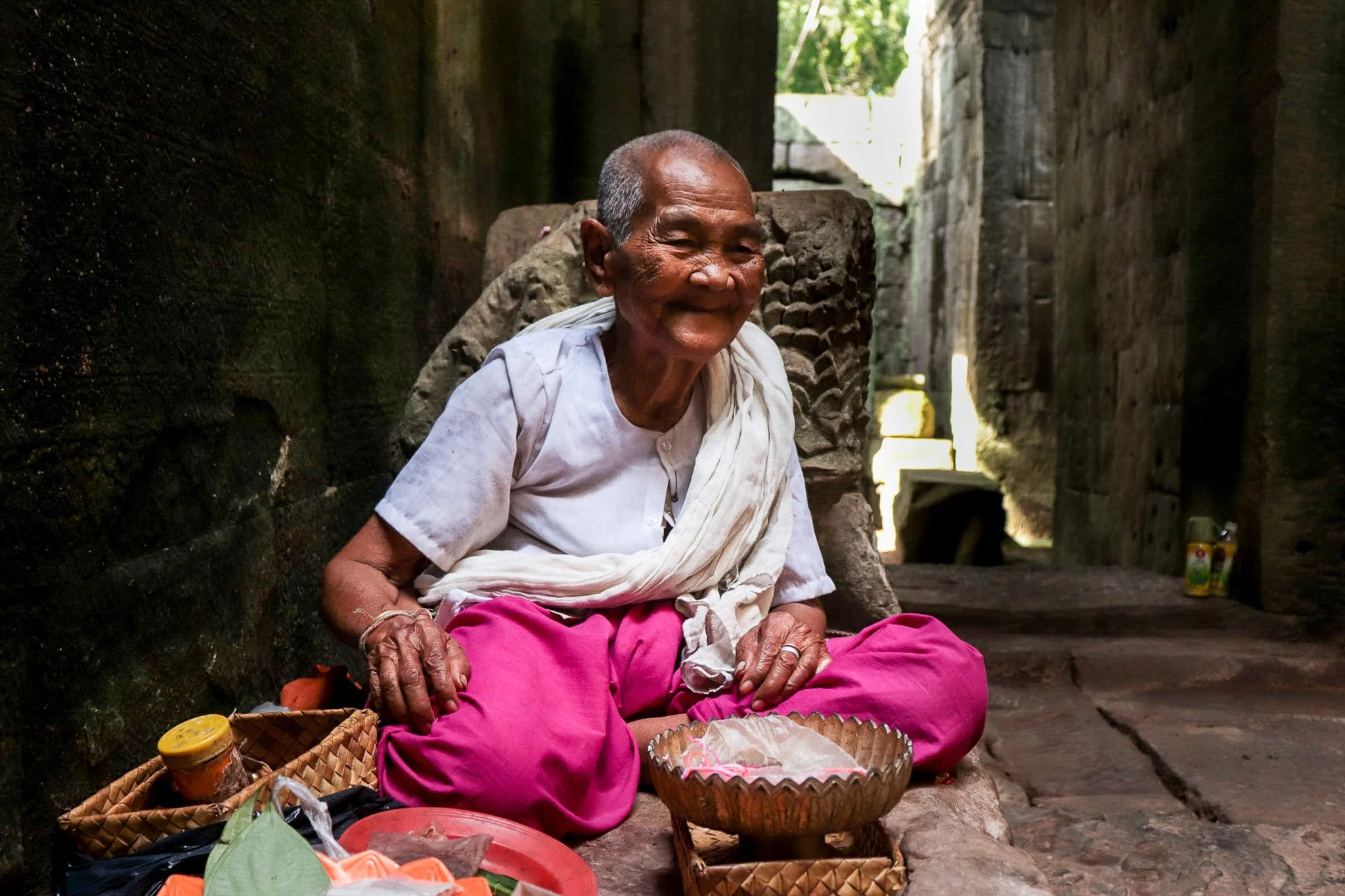
CAMBODIA
Cambodia, Considered.
From the crumbling majesty of Angkor Wat to the sleepy stilt villages of Tonlé Sap, Cambodia is a place of layered history and subtle magic. It’s where French-colonial remnants meet saffron-robed monks, where slow mornings turn into jungle-backed sunsets, and where the weight of the past hums just beneath the surface.
This is not the Thailand overflow. This is Cambodia—quiet, warm, complex. Whether you’re temple-hopping in Siem Reap, island-hopping off the southern coast, or tracing Phnom Penh’s creative revival, we’ll guide you to the moments that matter.
Where to go. Where to stay. What to skip. What to savor.
Every Moment, Considered.

Need To Know
-
The best window is November to March, when the skies stay dry and temple-hopping doesn’t feel like a fever dream. April gets brutally hot, and the rains hit hard from May through October—though the countryside is its most beautiful just after the monsoons.
-
Siem Reap is your main anchor—stay at least three nights to do it right. Phnom Penh is worth a short stay if you’re drawn to culture, contrast, and contemporary edge. For coastal time, split your days between Kampot and one of the southern islands. Don’t try to do everything. Cambodia rewards slowness.
-
Kindness runs deep here, and so does pain. Cambodia’s recent history is still raw, and should be approached with awareness, not voyeurism. Respect for the culture means dressing modestly, learning a few words in Khmer, and tipping generously. The beauty is real—but it’s layered.
Hala Hit List
A Few Of Our Forever Favorites.
Yes, it’s touristy. Yes, it’s worth it. Go early—pre-dawn early—and let the quiet grandeur of Angkor Wat unfold before the crowds pour in. Then skip the masses and explore the lesser-known temples: Bayon, Ta Nei, Banteay Srei. Hire a guide who actually knows the history.
Angkor at sunrise, Siem Reap
The southern countryside is its own kind of luxe. Rent a bike and ride through sleepy Kampot to the salt flats, then head inland for a Kampot pepper tasting at La Plantation. It’s quiet, it’s scenic, and the pepper is unlike anything you’ve had.
Salt farms & pepper tastings, Kampot
Float through a village on stilts, then dock for a meal you’ll remember—grilled river fish, fresh herbs, and cold beer served in someone’s home. The setting is humble, but the hospitality is generous. Go with a vetted guide who works with the community.
Lunch on the water, Tonlé Sap
Skip the loud expat bars and head to Sora—a rooftop lounge that feels like a secret. Watch the city flicker to life below you while sipping something floral and strong. This is the Phnom Penh people don’t expect.
Cocktails at Sora, Phnom Penh
Stay at a floating ecolodge or hike into the rainforest with a local tracker. Wake up to the sound of hornbills, swim in a hidden river, eat what’s cooked over the fire. No Wi-Fi. No distractions. Just you and the canopy.
Jungle hours in the Cardamoms
No roads. No noise. Just a torch-lit table in the sand, grilled seafood on a banana leaf, and stars so bright you’ll forget your phone exists. This isn’t just an escape—it’s a reset.
Dinner barefoot, Koh Rong Sanloem

If You Have 48 Hours
Land in Siem Reap and check into a boutique hotel with character—like Phum Baitang. Take your time. Wander the Old Market, stop for iced Khmer coffee, and visit Artisans Angkor for a glimpse of traditional craft that’s not a tourist trap. End the day with a riverside dinner: banana blossom salad, freshwater fish, and a local beer.
ARRIVE EARLY, GO SLOW
RISE FOR THE TEMPLES
Set your alarm early—pre-sunrise early—and head to Angkor Wat before the heat and the crowds arrive. Explore slowly: from Bayon’s serene faces to the crumbling quiet of Ta Prohm. Take a midday pause back at your hotel. For dinner, try a Khmer tasting menu at a local chef-led spot - refined and respectful.
FLOAT & FORAGE
Spend the morning on Tonlé Sap Lake, visiting a floating village with a local guide who knows the rhythms of the water. Lunch is somewhere unexpected—a home-cooked meal, eaten cross-legged with a view of the floodplains. Return to town for a sunset cocktail at a rooftop bar or hidden courtyard.
Walk or bike through the quiet backstreets of Siem Reap, stopping for fresh fruit, morning incense, and a final bowl of num banh chok. Shop for handwoven textiles or silverwork that actually supports local artisans. This isn’t a place to do more—it’s a place to feel more. Leave gently.
TAKE IT IN, DON’T RUSH OUT
The Slow Table
Nom banh chok is eaten at daybreak from women balancing baskets on bicycles—cold rice noodles, lemongrass curry, and fistfuls of herbs foraged that morning.
Prahok, the country’s signature fermented fish paste, is worked into stir-fries or eaten raw with crunchy vegetables—best tried at family-run kitchens like Cuisine Wat Damnak in Siem Reap or Kravanh in Phnom Penh.
Amok trei, river fish steamed with coconut, galangal, and fingerroot, arrives in banana-leaf bowls at quiet spots like Mahob Khmer or Pou Restaurant.
Bai sach chrouk is pork and broken rice marinated overnight, grilled before sunrise, and eaten on plastic stools with strong black coffee.
Need help with the details? Book a consultation or upgrade for full itinerary design, seamless bookings, and support every step of the way.
